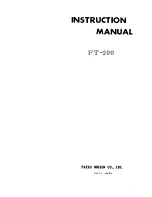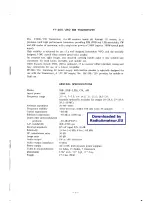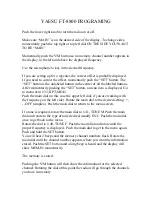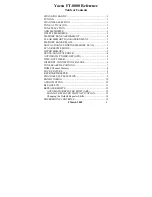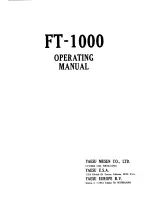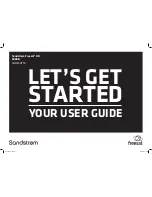
54
FT-847 O
PERATING
M
ANUAL
DCS (D
IGITAL
C
ODED
S
QUELCH
) O
PERATION
Similar to CTCSS, the DCS system is another form of
selective calling. An advantage of DCS is that it is
less susceptible to false opening of the squelch by un-
wanted signals.
As with CTCSS operation, the proper setup of DCS
involves two basic steps:
l
Activating the DCS system, using the [
3
(
TONE
)]
key; and
l
Selecting the proper DCS Code (analogous to the
CTCSS Tone Frequency).
To activate the DCS system, press the [
3
(
TONE
)] key
three times (if you currently have no tone system acti-
vated). The first two presses of this key activate the
CTCSS Encoder and Decoder, respectively, while the
third press deactivates the CTCSS and activates the
DCS. The DCS system is an Encode-Decode system
only.
To select the desired DCS Code, use Menu #13:
l
Press the [
MENU
] button to activate the Menu
mode of operation.
l
Rotate the
SUB-TUNE
knob to select Menu #13
(“
DCS-CODE
”).
l
Rotate the
MEM/VFO CH
knob to set the desired
Code #.
l
Press the [
MENU
] key to exit the Menu mode.
OPERATION
FM T
RANSMISSION
DTMF (A
UTOPATCH
) O
PERATION
The optional
MH-36
D8
DTMF Microphone includes
a 16-key DTMF pad, which may be used for autopatch
and/or control purposes. These keys are [
0
] ~ [
9
], plus
[
A
], [
B
], [
C
], and [
D
].
To send DTMF tones, first press the microphone’s
[
PTT
] switch. While holding in the [
P T T
] switch,
press the required DTMF keys in the order required.
You may then release the [
PTT
] switch, if you need to
listen for “Dial” tone or some other reply from the
repeater. Otherwise, you may continue with the trans-
mission.
The [
A
], [
B
], [
C
], and [
D
] keys
are
generally
used only for re-
peater control by a Control Op-
erator; consult your repeater’s
autopatch administrator for com-
mand code information.
For nighttime use, the
MH-36
D8
includes a back-lighting feature
which may be activated by turn-
ing the microphone’s [
LAMP
]
key on.
DCS C
ODE
023 025 026 031 032 036 043 047 051 053 054 065 071
072 073 074 114
115
116
122 125 131 132 134 143 145
152 155 156 162 165 172 174 205 212 223 225 226 243
244 245 246 251 252 255 261 263 265 266 271 274 306
311 315 325 331 332 343 346 351 356 364 365 371 411
412 413 423 431 432 445 446 452 454 455 462 464 465
466 503 506 516 523 526 532 546 565 606 612 624 627
631 632 654 662 664 703 712 723 731 732 734 743 754
Important Notes
Regarding CTCSS and DCS Decoder Operation
Because your FT-847’s receiver will be silent
during CTCSS or DCS Decoder operation, you
must be certain that the current operating fre-
quency is not occupied before you transmit.
The display’s “
BUSY
” icon responds to the pres-
ence of a carrier, and ignores any tones present.
So if you do not hear any speech audio in your
speaker, but see the “
BUSY
” icon on the dis-
play, this indicates that a station using a differ-
ent CTCSS Tone or DCS Code is currently us-
ing the frequency. Wait until the other station’s
transmission is completed (the “
BUSY
” icon will
disappear) before making your transmission. If
the “
BUSY
” icon does not disappear within a
reasonable time period, disable the Decoder in
use to be certain that the front panel’s
SQL
con-
trol is properly silencing background noise.
Содержание FT-847
Страница 7: ...5 FT 847 OPERATING MANUAL Plug Pinout...
Страница 21: ...19 FT 847 OPERATING MANUAL Installation NOTE...
Страница 44: ...42 FT 847 OPERATING MANUAL OPERATION NOTE...
Страница 51: ...49 FT 847 OPERATING MANUAL OPERATION CW TRANSMISSION...
Страница 67: ...65 FT 847 OPERATING MANUAL OPERATION NOTE...































